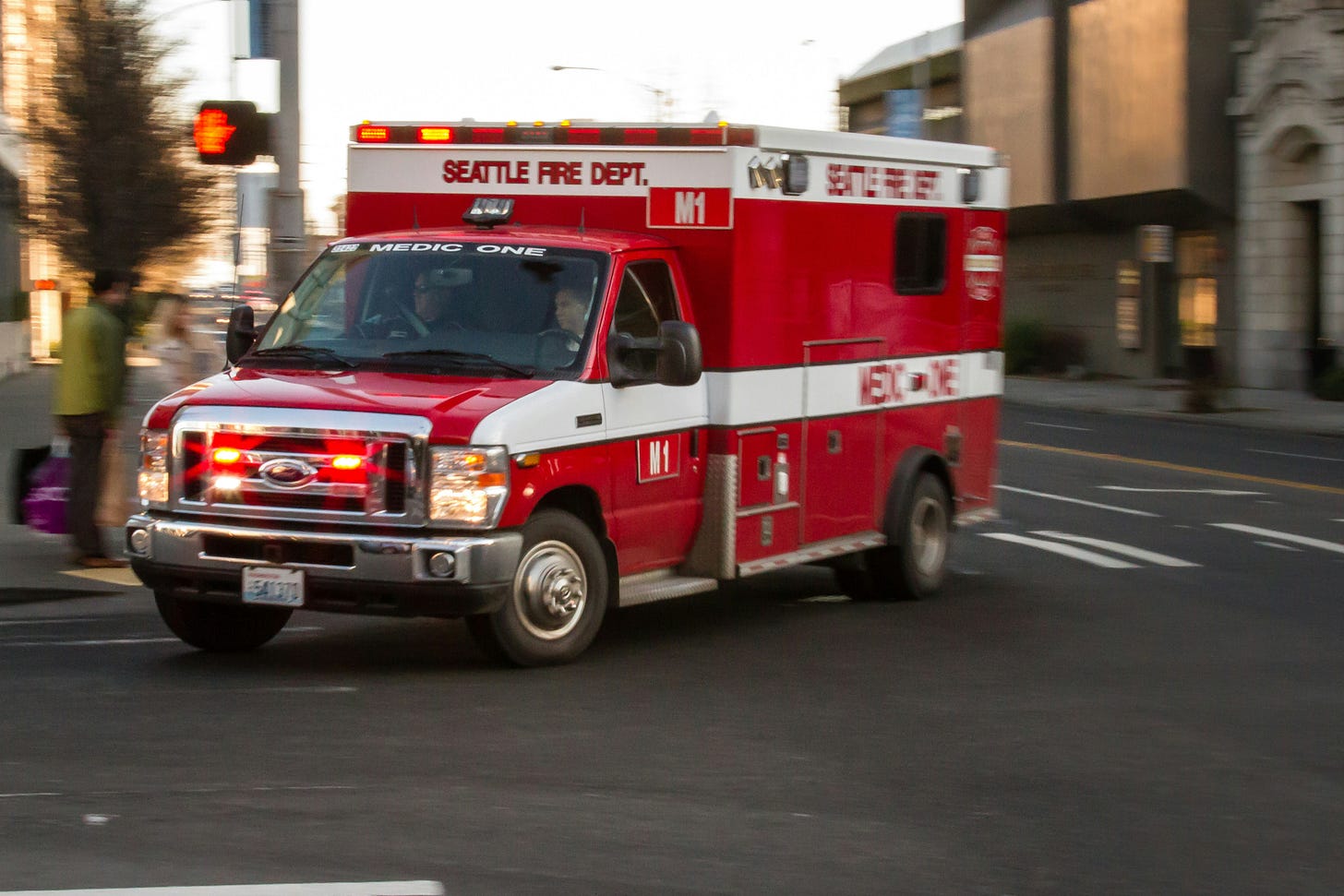What should you do when the awful and unfortunate happens? For example:
Heart attack.
Car accident.
Criminal activity.
Lost child.
House on fire.
An associate pastor leading a youth group backpack in an isolated mountain location tumbles down a snowy slope and breaks several bones.
Hurry! Call 9-1-1!
Yeah, you guessed it, #6 happened to yours truly. I busted my leg on a backpack in the 1980s. Several in my group returned to the trailhead—a six-mile slog—and found a phone. They, of course, called 9-1-1. Not long after, a helicopter plucked me from the wilderness and flew me to a hospital in Lake Tahoe.
If something bad happens, punch in 9-1-1. Except if you’re a hospice caregiver or patient: please don’t use those three life-saving numbers.
First, let’s remember 9-1-1’s history. According to the National Emergency Number Association (yes, there is one), a universal emergency number was first considered in the 1950s. After World War II, phones became increasingly common. But as much as people were easily linked “everywhere” by phones, there were myriad numbers for local, state, and regional police and fire departments. In a crisis, who to call could be confusing. That began to change.
On February 16, 1968, Alabama Senator Rankin Fite made the first 911 call in the United States in Haleyville, Alabama. The Alabama Telephone Company carried the call. A week later, Nome, Alaska, implemented a 911 system.
Ten years after Senator Fite’s call, 26% of the country had access to 9-1-1. Five plus decades following that initial success, 9-1-1 is nearly universal. Today, young or old, most know what to do when help is needed. Press those three numbers and . . .
But in hospice, one of the essential requests to a patient’s family is: don’t call 9-1-1.
They are told that with qualifications. Some patients in hospice have intentionally not signed a DNR form (Do Not Resuscitate) and want measures taken to revive them. Hospice will respect this, and it’s possible 9-1-1 could be called in a time of “crisis.” The patient will be taken to a hospital.
One of the frequent statements patients express when entering hospice care is: please, no more trips to an emergency room and/or hospital. They want to be home. They don’t want to be poked or prodded again, or confronted by another series of medical “tests.”
However, dying can be complex and scary. As much as everyone wants the peaceful death, there can be surges of pain, unexpected bleeding, or a seemingly calm patient becomes aggressive.
Caregivers—exhausted and worried—can be overwhelmed. They “forget” the patient signed a DNR form. They “forget” the patient never wanted to enter another hospital. In desperation, and perhaps also because of a good national habit (thank you, Senator Fite) they press 9-1-1. A patient that wanted to die at home is soon linked to machines, maybe has broken ribs from CPR, and a medical response team that doesn’t know the patient is ordering more tests and/or suggesting surgery.
Sorry. I don’t describe these possibilities to be polite. This is excruciating for everyone.
Hospice care does not mean a nurse is with the patient at home every hour of every day. Family and friends do much of the caregiving . . . and decision-making. Though hospice is a phone call away (and answered 24/7), it may take time to respond . . .
Often, it’s a long drive to reach the hospice patient living in a rural area.
In the city, traffic may gridlock, causing a patient that’s close in distance seem far by the clock.
Hospices can experience high demands on its available nurses, when multiple patients in multiple locations simultaneously all want help.
We want help now! And 9-1-1 is called.
In most cases, in small towns or a sprawling metro area, the first responders quickly arrive. Between sophisticated communication systems and emergency vehicles ready to roll, we expect that when the worst happens, help will soon appear. But hospice asks caregivers to not call 9-1-1. At the beginning, that’s easy. With tears and fears, the family knows their beloved prefers to die at home.
In a conversation with someone whose spouse died in a hospice’s care, she told me about calling 9-1-1. “I just didn’t think,” she said. She and her husband loved the hospice team. He had wonderful care, and had been served by the nurses, social workers, and others for many months. They were like family, she said. But when the “bad” happened, she admitted . . . I just didn’t think.
When your loved one first enters into hospice, I hope you listen carefully to what is said about calling 9-1-1. But if you think you “must” call emergency services, first call your hospice.
It will be hard to break the habit of calling in the 9-1-1 cavalry.
It is unsettling to see someone you love suffering.
But, in most cases, try-try-try to remember what your loved one wanted. No more hospitals. No more machines. Help hospice help them fulfill their hopes.
+++++++++++
Photo by Ian Taylor on Unsplash
My book, A Companion for the Hospice Journey is available at Amazon.


Sometimes deciding ahead of time not to call 911 may feel like giving up. And with that decision there is a grieving beginning to take place.